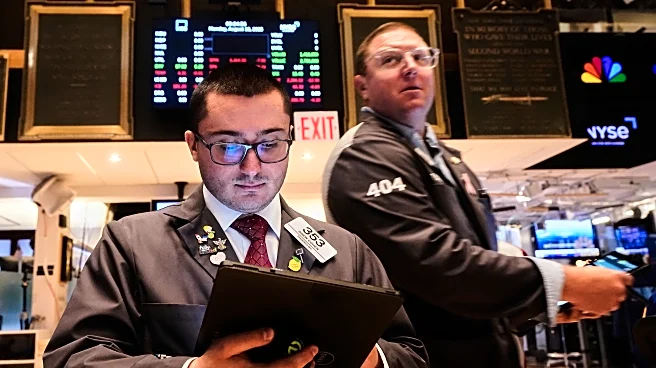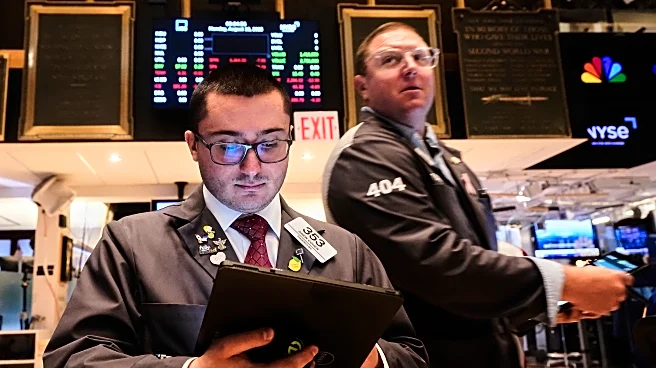Rapid Read • 8 min read
Palantir Technologies (PLTR) has experienced a significant stock decline, leading a broader selloff in the technology sector. On August 19, Palantir's stock fell by 10%, marking the worst performance in the S&P 500 index. This downturn follows a period of strong gains for the company, driven by positive financial results and excitement around artificial intelligence. Analysts suggest the selloff may be due to profit-taking after a substantial rally, as well as concerns over potential interest rate hikes by the U.S. Federal Reserve.
AD
The selloff in Palantir's stock highlights the volatility in the technology sector, particularly for companies with high valuations. This trend could signal a broader market correction, affecting investor sentiment and stock performance across the industry. The decline may prompt investors to reassess their portfolios, focusing on risk management and diversification. Additionally, the situation underscores the impact of macroeconomic factors, such as interest rate policies, on technology stocks, influencing investment strategies and market dynamics.
Investors and analysts will closely monitor Palantir's stock performance and broader market trends to assess potential recovery or further declines. Companies in the technology sector may need to address investor concerns by demonstrating sustainable growth and financial stability. The Federal Reserve's interest rate decisions will continue to play a crucial role in shaping market sentiment, potentially influencing stock valuations and investment flows. As the market adjusts, stakeholders may explore opportunities for strategic investments and risk mitigation.
The selloff raises questions about the sustainability of high valuations in the technology sector, prompting discussions on market speculation and investor behavior. It highlights the need for companies to balance innovation with financial prudence, ensuring long-term growth and stability. The situation may also influence regulatory considerations, as policymakers evaluate the impact of economic policies on market dynamics. Long-term shifts could include changes in investment strategies and corporate governance, as stakeholders adapt to evolving market conditions.
AD
More Stories You Might Enjoy











